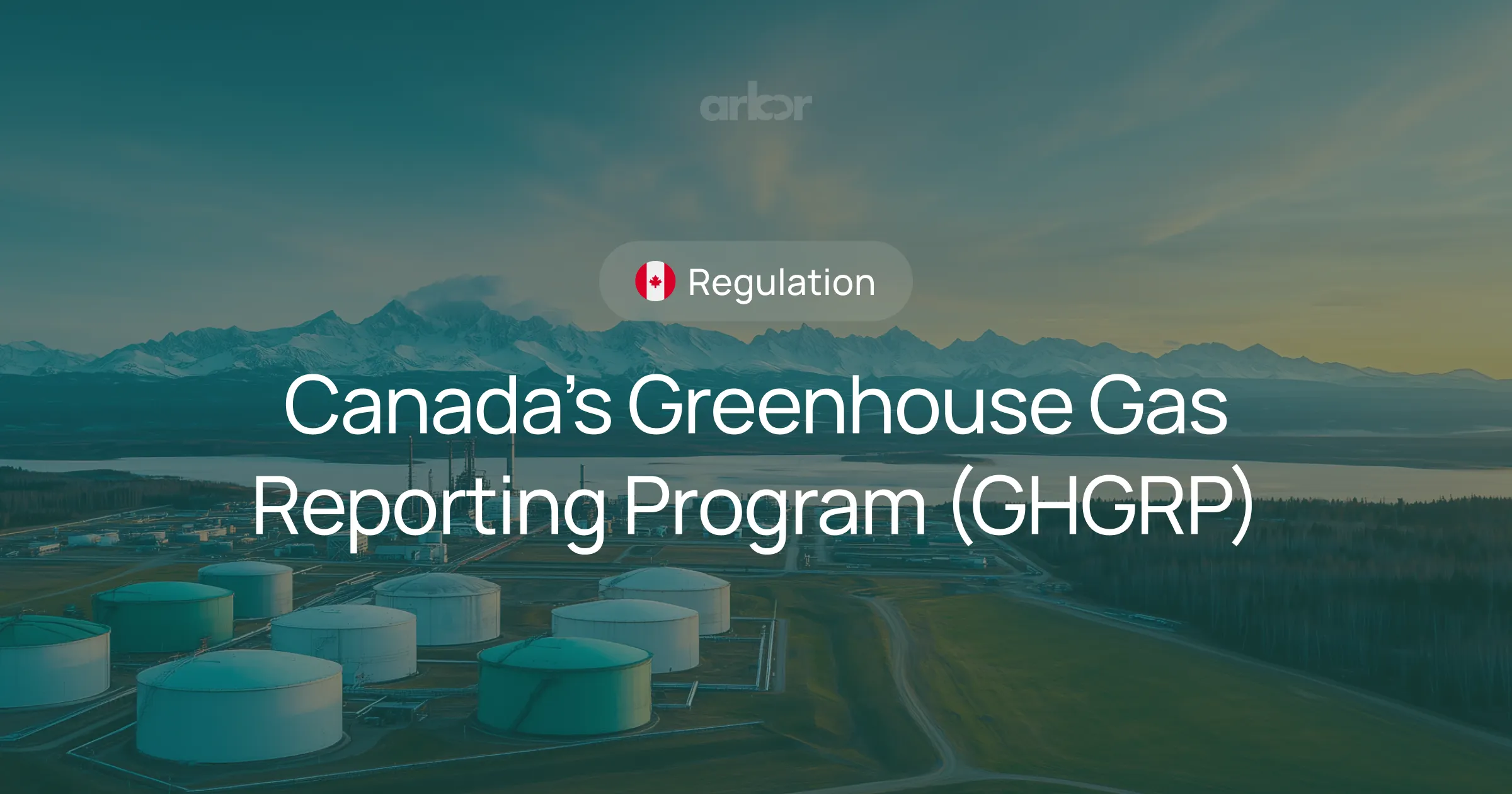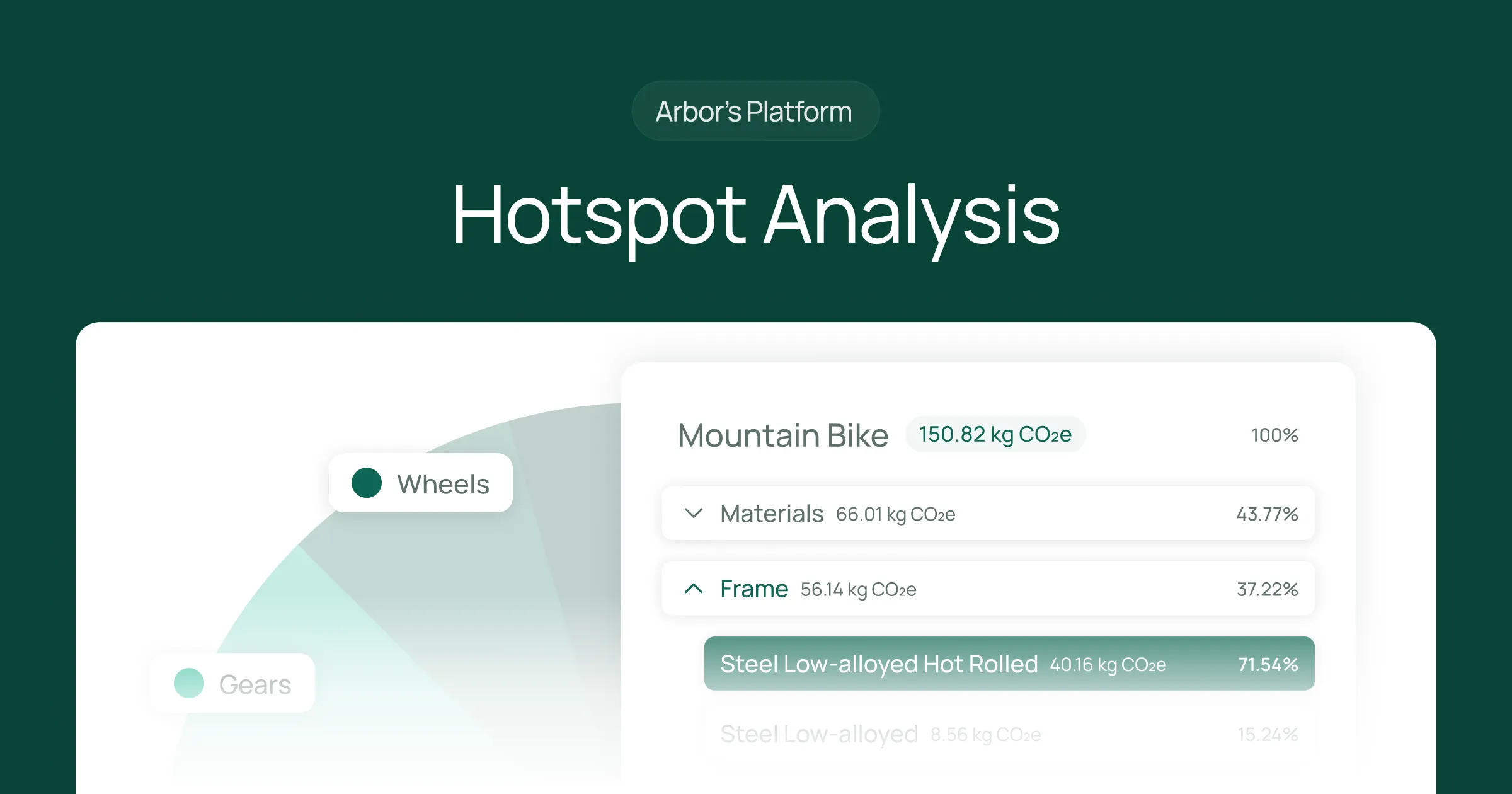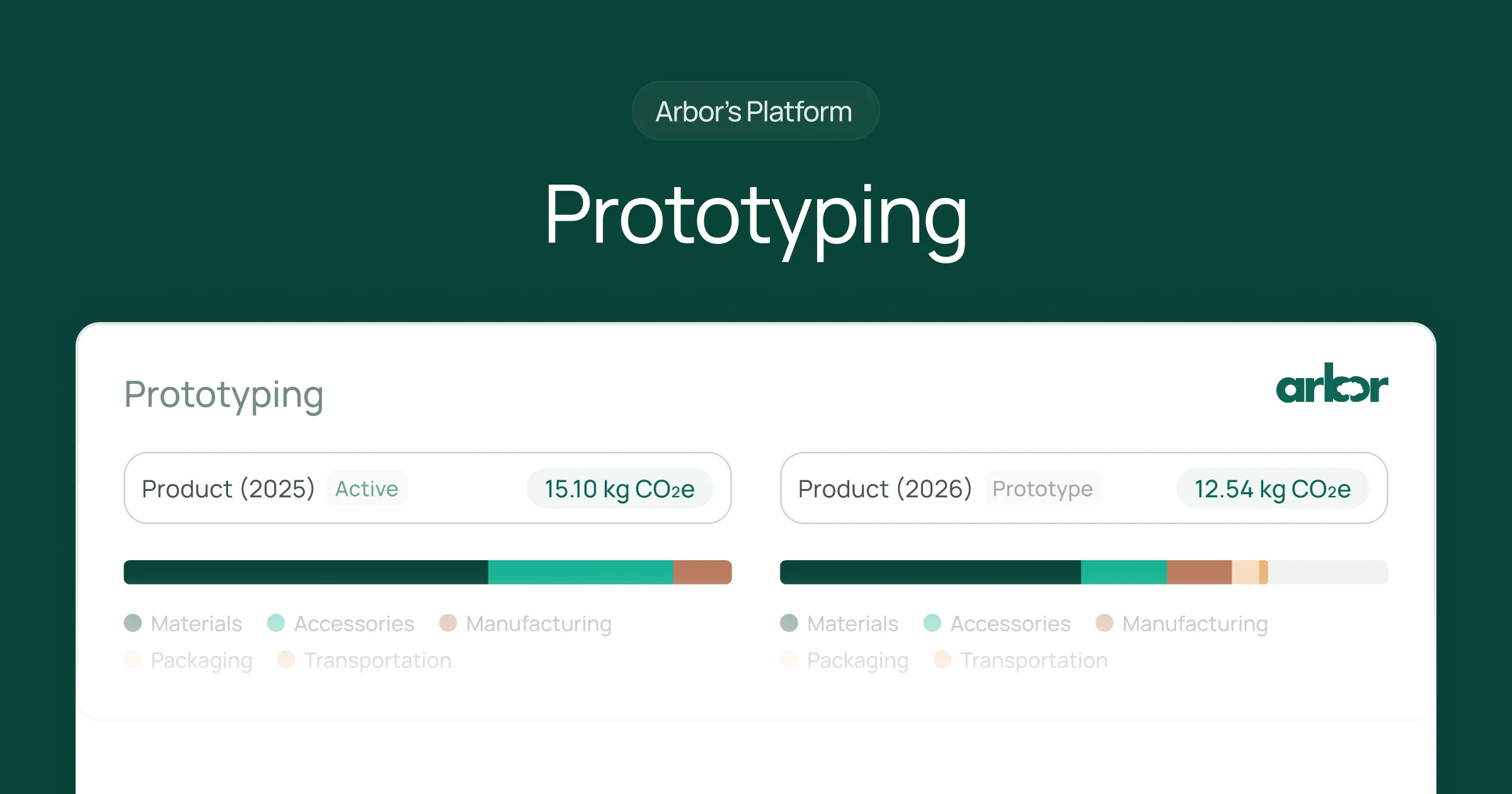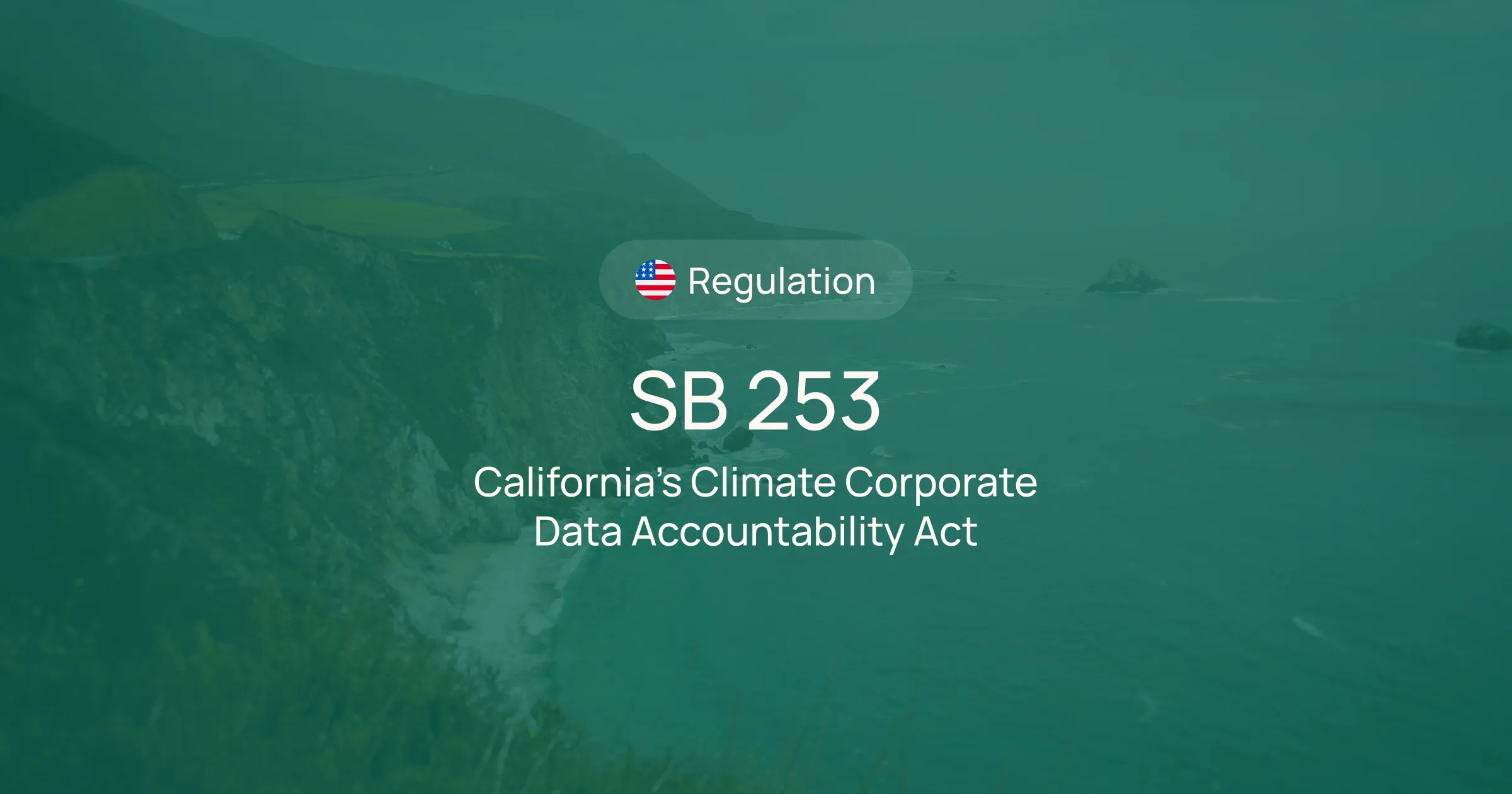As a business, it’s essential to be aware of your environmental footprint, plain and simple. That’s why we at Arbor crafted this straightforward guide; we want to help you cut through the confusion of the different scopes of emissions and get down to what matters for your business.
Emissions are broken into three parts: the direct emissions your company causes (Scope 1), the emissions from the energy you buy (Scope 2), and all the other indirect emissions tied to your business activities, from the supply chain to the disposal of your products (Scope 3). With easy-to-understand charts and examples from the real world, we’ve made it simpler to see where you stand and what steps you can take next.
Arbor measures Scope 1, 2, and 3 emissions with industry-leading accuracy, so if your business needs help reporting, disclosing, or measuring these scopes, let’s chat. We hope you enjoy the article!
Visual Chart of Scope 1, 2 and 3 Emissions

Look at this visual - your map to understanding greenhouse gas (GHG) emissions across three categories. Arbor provides this sharp tool to help businesses pinpoint their carbon footprint without the guesswork.
Starting at the top, we've got a lineup of the usual GHG suspects: CO2, CH4, N2O, HFCs, PFCs, and SF6. Each plays a part in the global emissions story.
For Scope 1, imagine your business as the source; your facilities and fleet immediately send these emissions into the atmosphere. They're the direct emissions you can manage hands-on because you're in the driver's seat.
Swing to Scope 2, where things get a bit more hands-off. Here, we're talking about the indirect emissions from the energy you buy—think of it as the energy's backstory before it powers your operations.
Scope 3 paints the fuller picture—it's the big net catching all other indirect emissions linked to your company's activities. We're not just talking about the stuff you buy or the waste you create but also the products you've sold and their supply chains—how they're transported, used, and finally laid to rest.
Scope 1 Emissions
Direct GHG emissions occur from sources owned or controlled by the company, such as company-owned vehicles and facilities.
Get in detail on Scope 1 with our blog: What are Scope 1 Emissions?
Stationary Combustion Sources
Combustion of fuels in stationary equipment such as generators, boilers, furnaces, burners, turbines, heaters, incinerators, engines, flares, etc.
Mobile Combustion Sources
Combustion of fuels in transportation devices such as automobiles, trucks, buses, trains, airplanes, boats, ships, barges, vessels, etc.
Refrigeration and AC
Commercial cooling equipment like air conditioners and refrigerators.
Fire Suppression Equipment
Building fire suppression systems or equipment like your company owns or controls fire extinguishers.
Scope 2 Emissions
Scope 2 accounts for emissions from energy generation purchased or otherwise brought into the company's organizational boundary.
Get in detail on Scope 2 with our blog: What are Scope 2 Emissions?
Scope 2 tracks at least 4 types of purchased energy:
Electricity
Almost all companies use this type of energy. It operates machines, lighting, electric vehicle charging, and certain heat and cooling systems.
Steam
Formed when water boils, steam is a valuable energy source for industrial processes. It is used for mechanical work, heat, or directly as a process medium.
Heat
Most commercial or industrial buildings require heat to control interior climates and heat water. Many industrial processes also require heat for specific equipment. That heat may be produced by electricity or through a non-electrical process such as solar thermal heat or thermal combustion processes (as with a boiler or a thermal power plant) outside the company’s operational control.
Cooling
Like heat, cooling may be produced from electricity or by distributing cooled air or water.
Scope 3 Emissions
Scope 3 Emissions includes all indirect emissions (not included in Scope 2) that occur in the reporting company's value chain, including both upstream and downstream emissions.
Get in detail on Scope 3 with our blog: What are Scope 3 Emissions?
Category 1: Purchased Goods and Services
This category includes all upstream (i.e., cradle-to-gate) emissions from producing products and services purchased or acquired by the reporting company in the reporting year.
Category 2: Capital Goods
This category includes all upstream (i.e., cradle-to-gate) emissions from the production of capital goods purchased or acquired by the reporting company in the reporting year. Capital goods are final products that have an extended life and are used by the company to manufacture a product, provide a service, or sell, store, and deliver merchandise.
Category 3: Fuel and Energy Related Activities
This category includes emissions related to the production of fuels and energy purchased and consumed by the reporting company in the reporting year that are not included in Scope 1 or 2.
Category 4: Transportation and Distribution (Upstream)
This category includes emissions from the transportation and distribution of products (excluding fuel and energy products) purchased or acquired by the reporting company in the reporting year in vehicles and facilities not owned or operated by the reporting company.
Category 5: Waste Generated in Operations
This category includes emissions from third-party disposal and treatment of waste generated in the reporting company’s owned or controlled operations in the reporting year.
Category 6: Business Travel
This category includes emissions from the transportation of employees for business-related activities in vehicles owned or operated by third parties, such as aircraft, trains, buses, and passenger cars.
Category 7: Employee Commuting
This category includes emissions from the transportation of employees between their homes and worksites.
Category 8: Leased Assets (Upstream)
This category includes emissions from the operation of assets leased by the reporting company in the reporting year and not already included in the reporting company’s scope 1 or scope 2 inventories.
Category 9: Transportation and Distribution (Downstream)
This category includes emissions from transportation and distribution of products sold by the reporting company in the reporting year between its operations and the end consumer (if not paid for by the reporting company) in vehicles and facilities not owned or controlled by the reporting company.
Category 10: Processing of Sold Products
This category includes emissions from the processing of intermediate products sold by third parties (e.g., manufacturers) after the reporting company sells them. Intermediate products require further processing, transformation, or inclusion in another product before use, resulting in emissions from processing after sale by the reporting company and before use by the end consumer.
Category 11: Use of Sold Products
This category includes emissions from the use of goods and services sold by the reporting company in the reporting year.
Category 12: End-of-Life Treatment of Sold Products
This category includes emissions from the waste disposal and treatment of products sold by the reporting company (in the reporting year) at the end of their life.
Category 13: Leased Assets (Downstream)
This category includes emissions from the operation of assets owned by the reporting company (acting as lessor) and leased to other entities in the reporting year that are not already included in Scope 1 or 2.
Category 14: Franchises
This category includes emissions from the operation of franchises not included in Scope 1 or Scope 2. A franchise is a business operating under a license to sell or distribute another company’s goods or services within a certain location.
Category 15: Investments
This category includes Scope 3 emissions associated with the reporting company’s investments in the reporting year, not already included in Scope 1 or 2. This category applies to investors (i.e., companies that make an investment to make a profit) and companies that provide financial services
Summary
Navigating the realm of Scope 1, 2, and 3 emissions is crucial for companies committed to sustainability and environmental responsibility.
Our 2025 guide elaborates on how direct emissions from company-controlled sources, indirect emissions from acquired energy, and all other indirect emissions within a company’s value chain play pivotal roles in shaping a company’s carbon footprint.
It highlights the significance of embracing comprehensive emissions reporting to align with global sustainability goals, enhance corporate reputations, and achieve significant cost savings through improved environmental performance.
Want to learn even more? Read our latest guide on Scope 1, 2, and 3 Emissions. Or check out a deep dive on each individual scope! Scope 1 Emissions, Scope 2 Emissions or Scope 3 Emissions.
Do you need help measuring or reporting Scope 1, 2, and 3 Emissions? Chat with Arbor’s carbon experts today to get your company on track.
Measure your carbon emissions with Arbor
Simple, easy carbon accounting.

Frequently Asked Questions About Scope 1, 2 and 3 Emissions
What are Scope 1, 2, and 3 emissions?
Scope 1 emissions refer to direct emissions from sources owned or controlled by a company, such as fuel burned in assets like buildings and vehicles. Scope 2 emissions are indirect emissions from purchased electricity and other sources, while Scope 3 emissions encompass all other indirect emissions associated with a company's operations, including business travel, waste disposal, and product end-of-life. Measuring and addressing all three scopes is crucial for understanding and reducing a company's carbon footprint and greenhouse gas emissions, with Scope 3 emissions often accounting for 80% to 95% of the total carbon footprint.
How do Scope 3 emissions impact a company’s carbon footprint?
Scope 3 emissions can account for a significant portion of a company's total carbon footprint, often between 80% and 95%. They encompass activities from assets not owned or controlled by the company but are part of its value chain.
Are companies required to report Scope 3 emissions?
Most Scope 3 emissions disclosures remain voluntary under various frameworks. However, they are increasingly becoming a focus for companies that are serious about addressing their environmental impact.
Why is it important to measure and address all three scopes of emissions?
Measuring and addressing these emissions is essential for fully understanding and effectively reducing a company's overall carbon footprint and greenhouse gas contributions.
What are specific examples of Scope 3 emissions?
These emissions include those related to business travel, the disposal of waste, and the environmental impact at the end of a product’s lifecycle.
How can businesses reduce their Scope 1, 2, and 3 emissions?
Companies can reduce their Scope 1 emissions by optimizing energy use and switching to renewable sources. Scope 2 emissions can be minimized by purchasing renewable energy and energy-efficient products. Reducing Scope 3 emissions involves working with suppliers to improve their carbon footprint, among other methods.
What are some examples of Scope 2 emissions?
Scope 2 emissions typically include those related to purchased electricity, steam, heat, and cooling. These emissions occur at the facility where energy is generated but are accounted for by the organization purchasing the energy.
How are Scope 3 emissions calculated?
Calculating Scope 3 emissions involves analyzing spend-based, activity-based, and supplier-based data to estimate emissions across the company's entire value chain. Arbor can help measure your Scope 1, 2 and 3 Emissions accurately.
Why is it challenging to track Scope 3 emissions?
Scope 3 emissions are difficult to track because they extend beyond a company's direct operations and involve multiple levels of the supply chain, making accurate measurement and reporting complex.
What strategies exist for reducing Scope 3 carbon emissions?
Businesses can reduce Scope 3 emissions by offering performance-based incentives to suppliers, engaging in long-term sustainability projects, and using more carbon-friendly materials. See these Scope 3 best practices.
How does reporting on Scope 1, 2, and 3 emissions benefit companies?
Comprehensive reporting on all emissions scopes aligns with global sustainability goals, enhances a company's reputation, satisfies stakeholder and investor inquiries, ensures regulatory compliance, and can lead to improved environmental performance and cost savings.
Why is it important to measure scope emissions, and how does it help in understanding and reducing a company's carbon footprint and impact on climate change?
Measuring scope emissions is essential for any company aiming to understand and reduce its environmental impact. Scope emissions encompass direct emissions from owned or controlled sources (Scope 1), indirect emissions from the generation of purchased electricity, steam, heating, and cooling consumed by the reporting company (Scope 2), and all other indirect emissions that occur in a company’s value chain (Scope 3). By creating a detailed emissions inventory, businesses can pinpoint where their primary sources of emissions originate, which is a critical first step in effectively managing and reducing their carbon footprint.
Understanding the full spectrum of emissions connected to a company's operations, including those from suppliers and product use, allows for a comprehensive strategy towards sustainability. This process not only aids in setting realistic and impactful emission reduction targets but also helps in monitoring progress towards these goals. It acts as the equivalent of weighing oneself before starting a diet; it sets a baseline from which progress can be measured. Furthermore, integrating emissions tracking into corporate strategy through advanced ESG (Environmental, Social, and Governance) software not only streamlines this tracking but also deepens an organization's comprehension of how its activities interlink with wider environmental impacts.
This thorough understanding fosters better decision-making that aligns with both business goals and environmental sustainability, ultimately strengthening the company’s reputation and stakeholder relationships, and contributing positively to combatting climate change.
What are some examples of scope 1, 2, and 3 emissions, and how do they contribute to a company's overall carbon footprint?
Scope 1 emissions originate directly from sources that a company owns or controls, including the combustion of fuels in company vehicles, machinery, and facilities, as well as incidental releases such as gas leaks. Scope 2 emissions are derived from the indirect energy demands of a company, primarily through the purchase of electricity, as well as heating and cooling that are required for operations. Scope 3 emissions, the most extensive category, include all other indirect emissions that occur within a company’s value chain. This includes activities such as business travel, commuting practices of employees, waste disposal, and the transportation and distribution of a company’s products. Collectively, these emissions types make up a company's total carbon footprint, with Scope 3 emissions frequently surpassing the sum of Scope 1 and 2, thereby representing a significant portion of environmental impact.
How can a company measure and reduce its scope 1, 2, and 3 emissions using tools like Arbor, and what are the steps involved in starting the path to net-zero emissions?
Companies aiming to measure and reduce their scope 1, 2, and 3 emissions can effectively use tools such as Arbor. Here's how the process works and the steps involved in advancing towards net-zero emissions:
1. Carbon Footprint Calculation: Begin by assessing your company's current environmental impact. Arbor offers tools that calculate the carbon footprint of a company’s direct emissions (scope 1), indirect emissions from purchased electricity, heat, and steam (scope 2), as well as all other indirect emissions (scope 3) that occur in the value chain, including both upstream and downstream emissions.
2. Request a Demo: Engage with Arbor by requesting a demo to understand how their platform and tools can be tailored to your company's needs. This initial step will help clarify how to use the tool effectively and what specific data you need to gather.
3. Data Collection: Collect accurate data on your energy use, resource consumption, waste management, and any other relevant parameters. This data is essential for the tool to provide accurate insights into your emissions across all scopes.
4. Analysis and Reporting: Use Arbor to analyze this data. The platform will provide a detailed report outlining your major emission sources. This step is crucial for identifying the key areas where emissions reductions are most feasible.
5. Set Reduction Targets: Based on the analysis, set realistic and achievable emissions reduction targets per global standards and industry best practices. Arbor can help model various scenarios and outcomes based on different targets.
6. Implementation of Reduction Strategies: Implement the identified strategies to reduce emissions. This could involve changes in energy sources, enhancing efficiency, investing in new technologies, or improving supply chain management.
7. Monitoring Progress: Continuously monitor progress against the targets. Arbor allows you to track improvements and adjust strategies as needed.
8. Reporting and Verification: Utilize the platform to prepare reports on sustainability performance. Arbor ensures that all information is grounded in rigorous research and adheres to current industry standards. Trusted third-party sources verify the data, enhancing credibility.
9. Continuous Improvement: Finally, treat this as an ongoing process. Sustainability is a continuous improvement journey, requiring regular updates to practices, keeping abreast of new technologies and industry developments, and recalibrating goals as necessary. By following these steps, a company can not only measure and reduce its carbon footprint across all emission scopes but also make significant progress towards achieving net-zero emissions.
What emissions reporting is required by the GHG Protocol Corporate Standard, and why is it considered the gold standard for corporate carbon accounting and emissions reporting?
The GHG Protocol Corporate Standard is widely regarded as the benchmark for corporate carbon accounting and emissions reporting. This standard mandates that companies must compile a comprehensive greenhouse gas (GHG) inventory, covering all relevant scope 1 and 2 emissions. This includes all emission sources and activities significant to the company’s operations and corporate value chain. The requirement ensures that the emissions inventory is both accurate and inclusive, reflecting a genuine and fair representation of a company’s environmental impact.
The standard is considered the gold standard primarily because it offers a systematic and standardized approach to emissions measurement. This is crucial in the context of the complex global landscape of sustainability regulations and disclosure obligations. By adhering to this standard, companies can ensure that their sustainability practices are operational and meaningful, setting a reliable benchmark for accountability and transparency in corporate emissions reporting. This consistency is essential for companies aiming to effectively manage and mitigate their environmental impact in a globally recognized manner.



%20Directive.webp)


.webp)











%20Arbor.avif)





%20Arbor.avif)


.avif)






%20Arbor%20Canada.avif)

.avif)
%20Arbor.avif)
.avif)






_.avif)
.avif)
%20Arbor.avif)




%20Software%20and%20Tools.avif)





.avif)
.avif)




%20EU%20Regulation.avif)












.avif)

%20Arbor.avif)









_%20_%20Carbon%20101.avif)







.avif)

.avif)
.avif)










